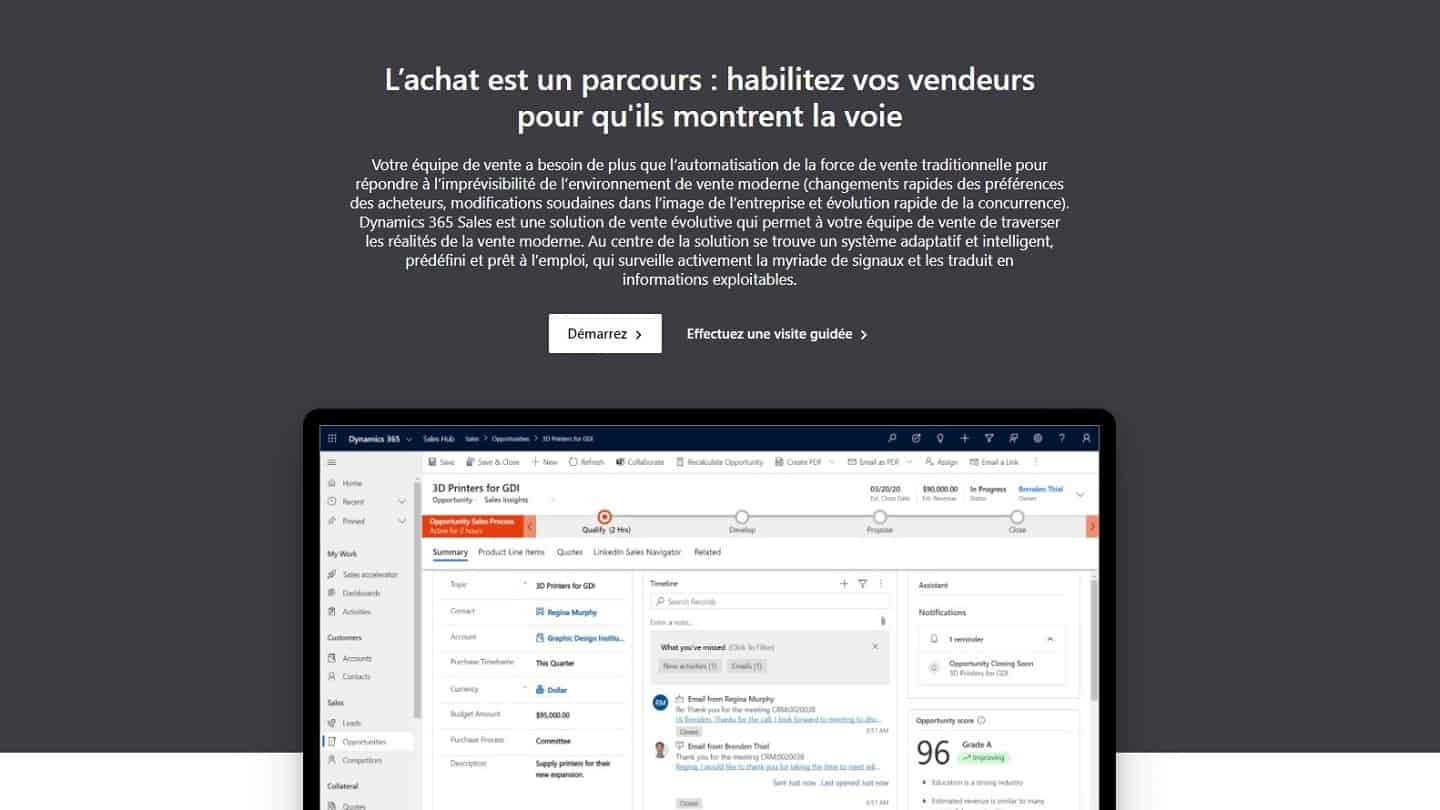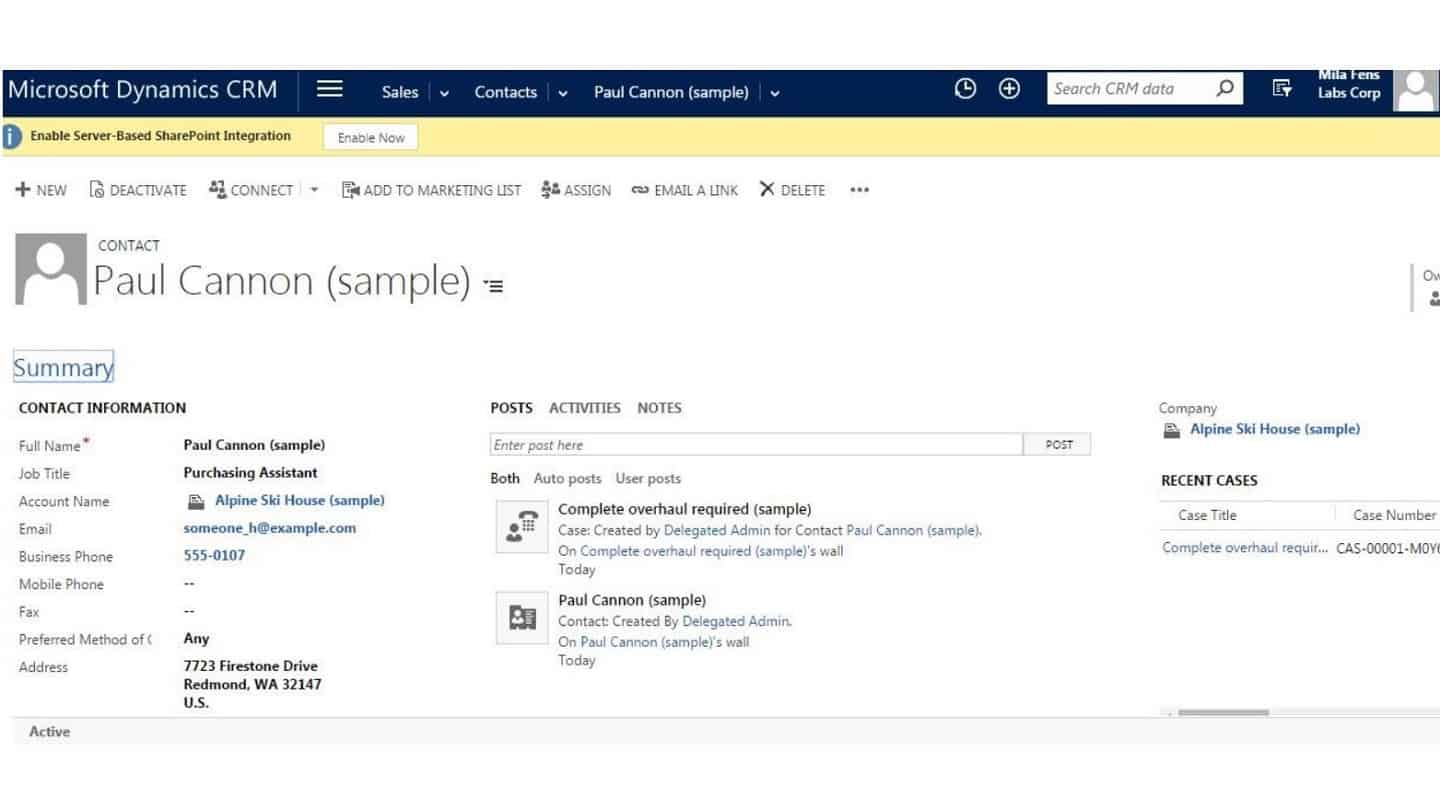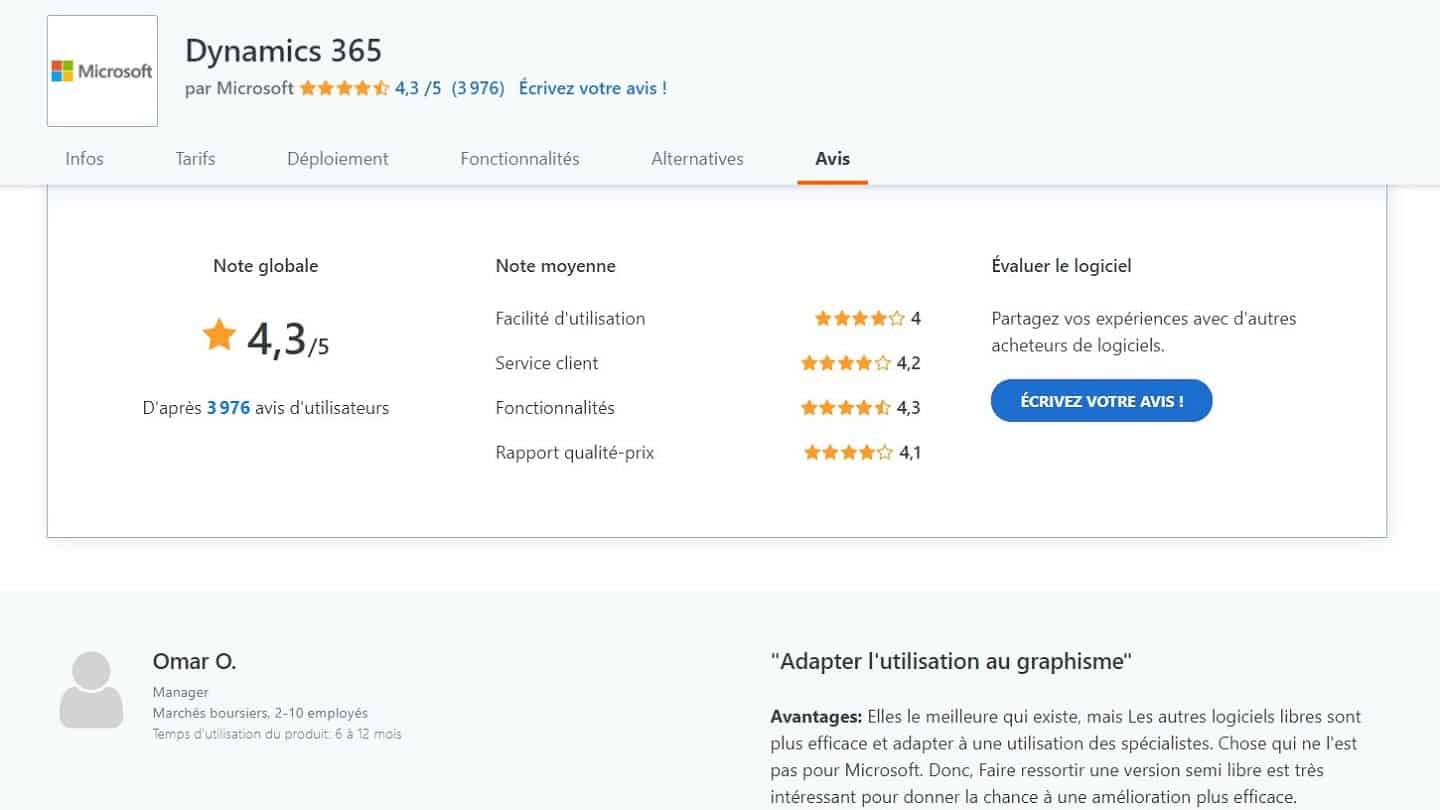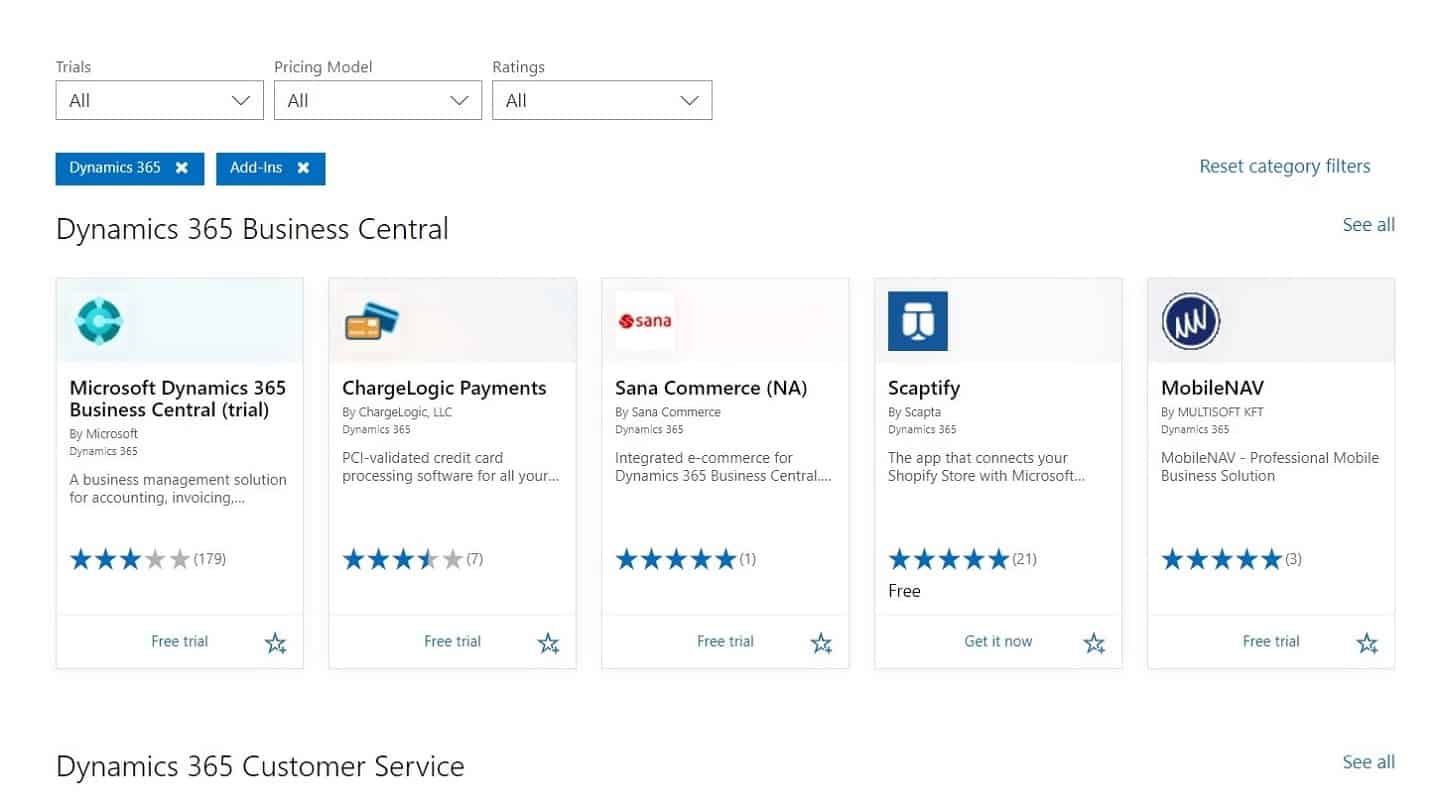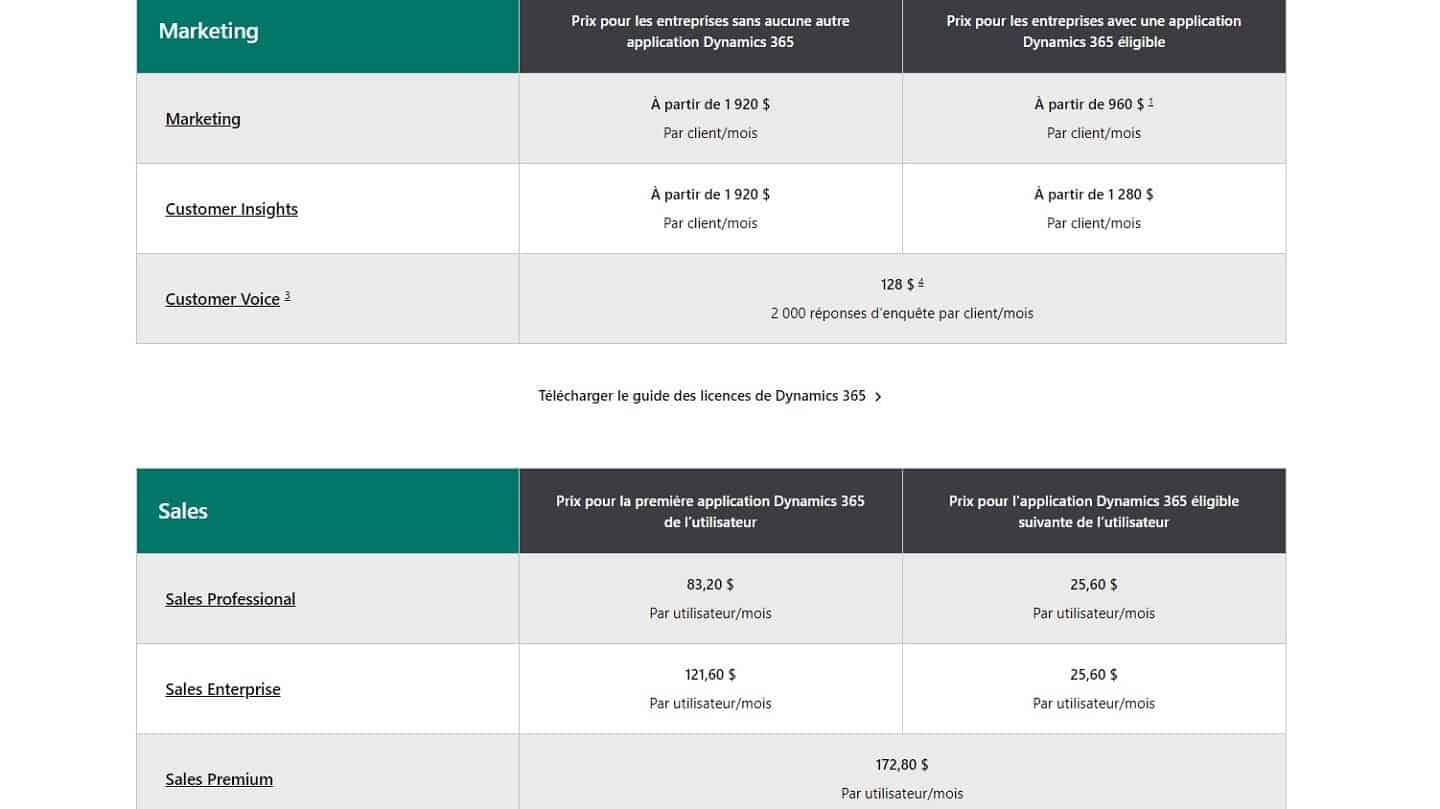- Integrates well with the Microsoft suite, including Office 365 and Azure
- Full-featured, multi-table B2B CRM
- Marketing Automation software also available
Our review of Microsoft Dynamics
Microsoft Dynamics is intelligent application software for businesses. It increases agility, empowers people to adapt to change and fosters innovation. This comprehensive, high-performance CRM will enable you to structure the work of your sales force to optimize their productivity.
My opinion
Customer reviews
- Catastrophic user interface
- Fairly unreliable and lots of bugs
- No free trial
Ideal for those who are highly dependent on the Microsoft ecosystem
From 60.80 per user
No free trial
Sommaire
If you’re looking for a CRM solution that’s equally suited to SMEs, mid-sized companies and large corporations, Microsoft Dynamics is the right choice.
This comprehensive, high-performance CRM will enable you to structure the work of your sales force to optimize their productivity. Let’s take a closer look at the main features of Microsoft Dynamics CRM.
Sommaire
My opinion of Microsoft Dynamics in a nutshell
| Perimeter | Score | My opinion |
|---|---|---|
| Overall rating | 4,1 | Microsoft’s CRM software is a very solid, feature-rich option, and naturally integrates very well into the Sharepoint world. We regret, however, that ergonomics are rather weak, which impacts adoption rates and deployment & training costs. |
| Ease of use | 3,8 | This is really the tool’s weak point, as its interface is rather difficult to access. Even customers who have been using the solution for some time deplore the rough user experience. |
| Easy to install | 3,6 | If you’re committed to the Microsoft ecosystem (Sharepoint, Outloook, Skype, etc.), the tool will integrate very well into your existing processes, and that’s a real strength for Microsoft. However, a poor user experience is likely to affect your adoption rates. |
| Customer service | 3,4 | Admittedly, this is not one of Microsoft Dynnamics’ strong points. While the software is widely used in certain industries, CRM experts know very little about the tool. As for Microsoft themselves, don’t count on the quality or responsiveness of support: it’s an English-language ticket system, just like in the 90s… |
| Integrations | 4,1 | Microsoft’s AppSource marketplace is quite similar to Salesforce’s, and equally rich. Microsoft also offers a number of advanced modules for managing production, points of sale, maintenance, logistics and more. |
| Value for money | 4,5 | Microsoft Dynamics’ pricing structure is particularly unclear. On the whole, the tool is positioned at fairly similar prices to Salesforce, but with rather fewer convincing arguments. MS Dynamics won’t make the business of the century, but it can make a lot of sense if it integrates well with your existing Microsoft tools. |
#1 The Microsoft Dynamics CRM sales tunnel
Of course, Microsoft Dynamics 365 CRM also includes a Sales section. Here, everything is centralized to give your sales people the tools they need to perform. Task and appointment management, intelligent automation, real-time data, etc. This tool is also integrated with the other tools in the Office suite for a 365 vision.
Once your sales reps start attracting new prospects, you need to make sure they become “hot” – in other words, ready to close. This is what we call an opportunity. In Microsoft Dynamics CRM, these opportunities will be displayed in the form of a list. If you want to move a prospect to another level in your sales pipeline, you’ll have to make several clicks, which isn’t very practical.
Salesdorado’s opinion
This is a shortcoming compared to other CRMs, most of which offer a “drag & drop” system by default.
Once your prospect is mature and finally ready to buy, Microsoft Dynamics 365 Sales will allow you to :
- Create customized quotes, purchase orders and invoices,
- Send them by e-mail,
- And, last but not least, precise monitoring thanks to the comprehensive, customizable reports offered by Microsoft.
Quality CRM software to manage all your quotes and invoices.
Try Microsoft Dynamics for free
#2 Contact management in Microsoft Dynamics CRM
Contact management is one of Microsoft Dynamics’ strong points. When viewing a contact record, you will see options for :
- Create a new record,
- Deactivate recording,
- Link the current record to a different contact record,
- Add contact to a marketing list,
- Assign a user to registration.
Salesdorado’s tip
If you click on the phone number on one of your contacts’ pages, and if you’ve integrated Skype into your account, you’ll be able to make calls directly from this CRM.
Like most of the best CRM software on the market, Microsoft Dynamics treats opportunities separately from leads. The “Leads” record displays a timeline at the top, allowing you to easily see where you are in the process: Qualify, Develop, Propose and Close. The summary section contains details of the marketing lists to which the user is assigned, as well as their recent activities. You can also assign the prospect to an opportunity from this view.
The “Opportunity” record is very similar to the Leads record, with the same chronology at the top and the summary section at the bottom. There’s a ton of information available and many features, but they’re not quite presented like many other CRM solutions, which makes the learning curve for your sales reps (and therefore adoption) significantly longer.
Salesdorado’s opinion
Microsoft Dynamics CRM is highly developed for contact management. It’s a pity, however, that opportunities and leads are visually very similar.
Try Microsoft Dynamics for free
#3 Ease of use and implementation of Microsoft Dynamics CRM
This is Microsoft Dynamics’ biggest flaw. At the very start of your use, Microsoft offers a guided tour, which is customized by function, so that you can see how a sales representative, field salesperson, sales manager, customer service agent etc. would use the software.
But all your entries must be saved by clicking on the corresponding button. You’ll need to pay attention to this particular point because no one will tell you. You’ll also notice that the only way to access Microsoft’s 30-day trial is by clicking on a small link at the very bottom of the page. The least we can say is that it’s not in the spotlight at all.
Salesdorado’s opinion
Microsoft isn’t the easiest software to get to grips with. Be persistent!
Try Microsoft Dynamics for free
#4 Customer reviews of Microsoft Dynamics CRM
If we had to sum up customer reviews in a few words, it could be :
“It’s a very good program in general, but it could do with being a little more intuitive and ergonomic.
Indeed, users praise its ability to manage all customer data in one place, as well as its high degree of personalization. On the other hand, the complexity of implementation and its slow adoption by all employees make this CRM a tool reserved for insiders. So it’s hardly surprising that it scores 7.9 out of 10 and 3.7 out of 5 on review sites such as Trustradius and G2.
Salesdorado’s opinion
That’s about it for this article. Microsoft Dynamics CRM is a highly developed tool, with a ton of features, but with a relatively steep learning curve.
Try Microsoft Dynamics for free
#5 Microsoft Dynamics CRM: Integrations with the Microsoft ecosystem and other tools
If you already have a Microsoft store, Microsoft CRM makes it easy to integrate with other Microsoft products. There’s also a button to enable server-based SharePoint integration, and you can configure Skype to handle all phone calls directly from the CRM.
AppSource is similar to Salesforce.com’s App Store, offering third-party tools to integrate into your Microsoft ecosystem.
Microsoft Dynamics CRM Online has no integration with popular software such as Quickbooks or Zendesk. To use these tools, you need to purchase third-party connectors such as DBsync on the market, or install your software API key in Zapier, a widely used third-party connector.
When you log in to your trial version for the first time, you’ll be prompted to view a video tutorial and other support material. The help material is comprehensive and it’s easy to find the information you need.
Chat support is easy to access and, overall, I’ve found the agents to be competent and eager to help. I sent a request for help saying I couldn’t log in and received a phone call within the hour to help me access the account.
Salesdorado’s opinion
The use of Microsoft Dynamics CRM is boosted if you already work with Microsoft tools. You can create a full Microsoft ecosystem to make it easier for your employees to join.
Try Microsoft Dynamics for free
#6 Microsoft Dynamics CRM pricing details
We’ve only touched on the cost of the software, which represents only part of the cost of a CRM. To register for Microsoft Dynamics CRM online, you must pay for a minimum of five users.
Smaller organizations wishing to have fewer than five users, or to have the on-premise version installed on their own infrastructure, need to work with a Microsoft partner to get up and running. In this case, we recommend alternatives such as pipedrive or activecampaign.
Microsoft Dynamics CRM pricing plans are complicated, with different plans targeting sales and marketing professionals.
- On the Sales side, the Professional package (from €54.80 per user per month) is recommended for sales and customer support teams. It includes social media analysis, sales and customer service automation, and accurate reporting.
- On the marketing side, the Marketing package (from €1265 per month) offers campaign management, prospect management and scoring, social marketing and statistical analysis.
Salesdorado’s opinion
In our opinion, Microsoft would benefit from being much clearer and more transparent about their pricing plans.


